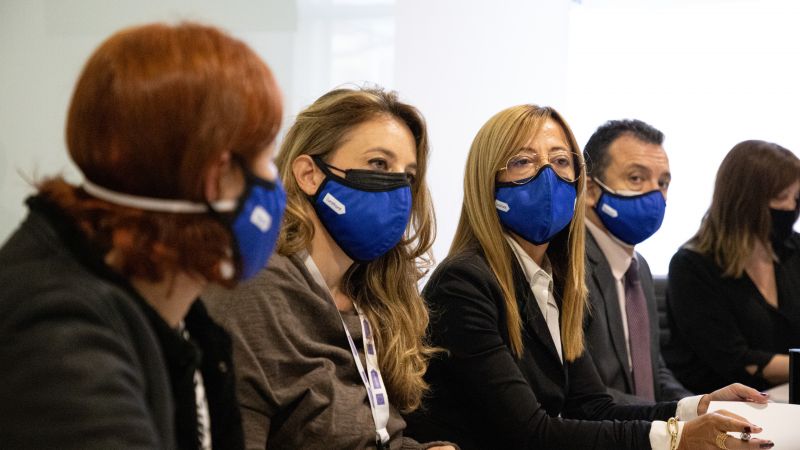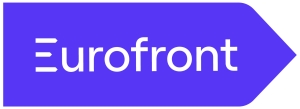News
The activity of cross-border organised criminal groups poses a threat to national and global security with direct implications for public health, security, and economic stability. In response, EUROFRONT seeks the support of the regional dimension to promote reforms agreed in a multi-country key or in the field of regional networks, which constitutes one of the strategic principles that will guide this year's work.

To achieve this, cooperation between international working groups such as the one formed by EUROFRONT, which organises its activity into two main components or lines of action, is essential: Comprehensive Border Management and the fight against human trafficking and migrant smuggling. Below, we present the main strategic guidelines of both components for 2022.
Strategy to promote Comprehensive Border Management (CBM) in Latin America
In the words of José Antonio Cambronero, director of EUROFRONT's Component 1 on Comprehensive Border Management, "the 2022 financial year is key to integrating the processes promoted during 2021, consolidating results and bringing together the actions of the Programme around the strategic priorities evidenced in the dialogue with national institutions.
The strategic lines of Component 1 include supporting the regional organisations MERCOSUR and CAN in the creation of specific working groups within them to improve border security. "This involves the creation of spaces for dialogue in order to contribute to the development of relevant international agreements on border issues", says Claudia Gatti of IILA. In turn, the objective is to "optimise the process manuals used at the borders, taking advantage of the good regional practices identified", recalls Cambronero.
The key to IILA's contribution to this Programme for 2022, in the words of Gatti, is "sharing the European experience in regulations on migration management, border police cooperation, artificial intelligence and biometric and database control while developing tools that can provide assistance to border guards in their daily work, improving cooperation at the inter-institutional, inter-agency and international level, as well as preparing border manuals based on the Schengen model”.
For its part, the IOM contribution to Component 1, in Fernanda's words, will consist of "providing the Programme's pilot border posts with equipment, technological solutions and infrastructure, helping to improve identification, registration and control processes, improving the capacity of users, and promoting the use of common and shared databases and technical solutions to address border management and security problems”.
“We are committed to continuing the process of the institutional strengthening and harmonisation of border procedures and practices”, concludes Cambronero, “and supporting learning among peers by taking advantage of the knowledge created and accumulated in the EU”.
Strategy for combating the trafficking and smuggling of migrants
Laura Estomba, Director ofComponent II, expressed that "The action plan established for 2022 is derived from what we learned and the results obtained during 2021, which allowed us to identify the specific needs of the member countries as regards the fight against trafficking and the smuggling of migrants. These lines of action will allow us to continue strengthening cooperation and to continue working in coordination with national governments, providing support in the strategies they are carrying out".
In this regard, one of the main lines for this year began in 2021 when, within the framework of the programme, support was provided in the creation and improvement of the information systems of the member countries. To achieve this, EUROFRONT worked closely with national governments as well as with the developers, programmers, and data science specialists who are currently working on them. In this regard, the fundamental objective for 2022 is to finalise these systems, socialise them and implement them in the daily work of the agents in charge of preventing human trafficking.
Another of the highlights of the action plan for 2022 is the preparation of training materials and courses for border personnel, police and members of the justice system, whose objective is the early identification of possible cases of human trafficking in the border area. In February 2022 in Paraguay, the first training of this type took place, thus beginning the cycle that will be carried out throughout the year in line with the prevention messages developed in the fight against human trafficking.
Last but not least, is the work that has been done and will continue to be done this year with MERCOSUR. During 2021, the Declaration of the Ministers for the Interior and Security to Combat Trafficking in Persons and the Illicit Smuggling of Migrants at the Border in the Context of the COVID-19 Pandemic was signed, through joint work between the EUROFRONT Programme with the Specialised Migratory Forum (SMF) and the Technical Commission. Within this framework, EUROFRONT will provide support in updating the “Regional Action Guide for the Early Detection of Situations of Trafficking in Persons at MERCOSUR and Associated States Border Crossings”. In addition, from this joint work, training will be carried out and a network of focal points will be formed to address this issue.
The lines of action for 2022 will involve continuing the joint work with national governments and strengthening the existing cooperation between the parties, with a gender and human rights perspective inherent to the objectives of the EUROFRONT programme as a whole.
Line of action
Social media news

